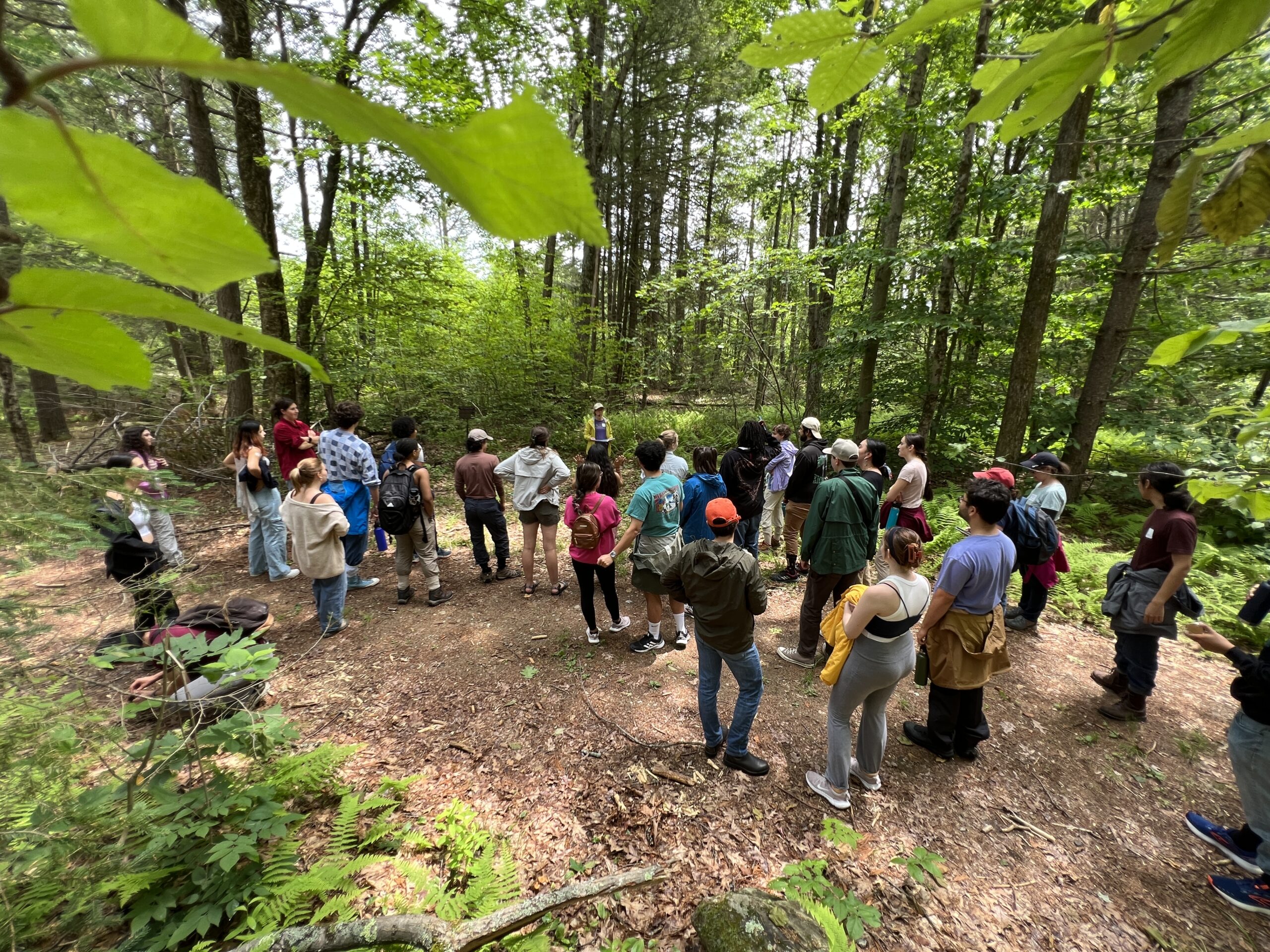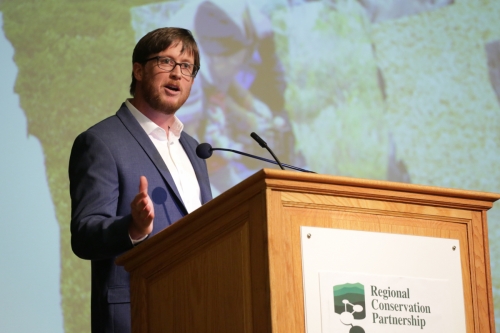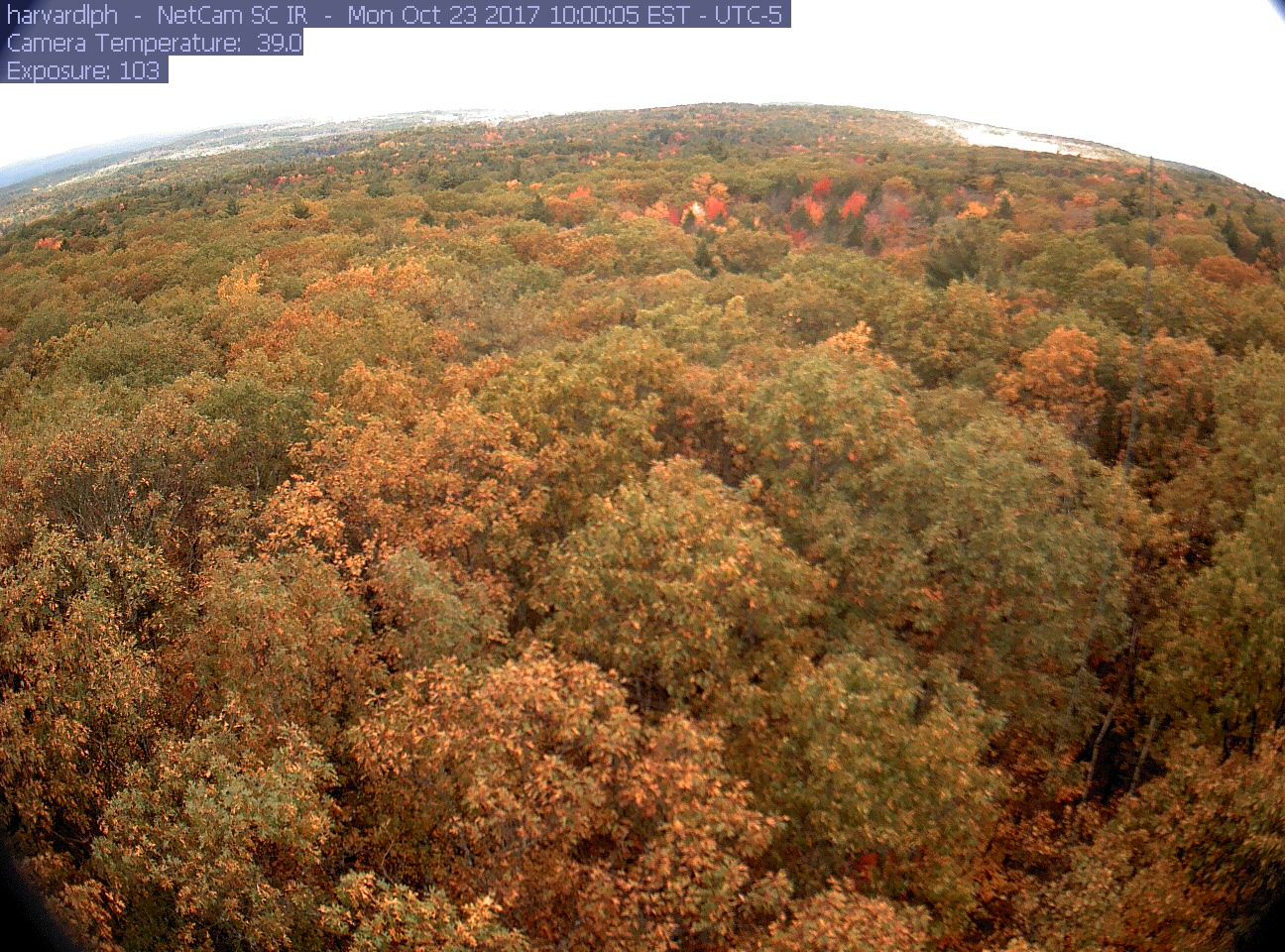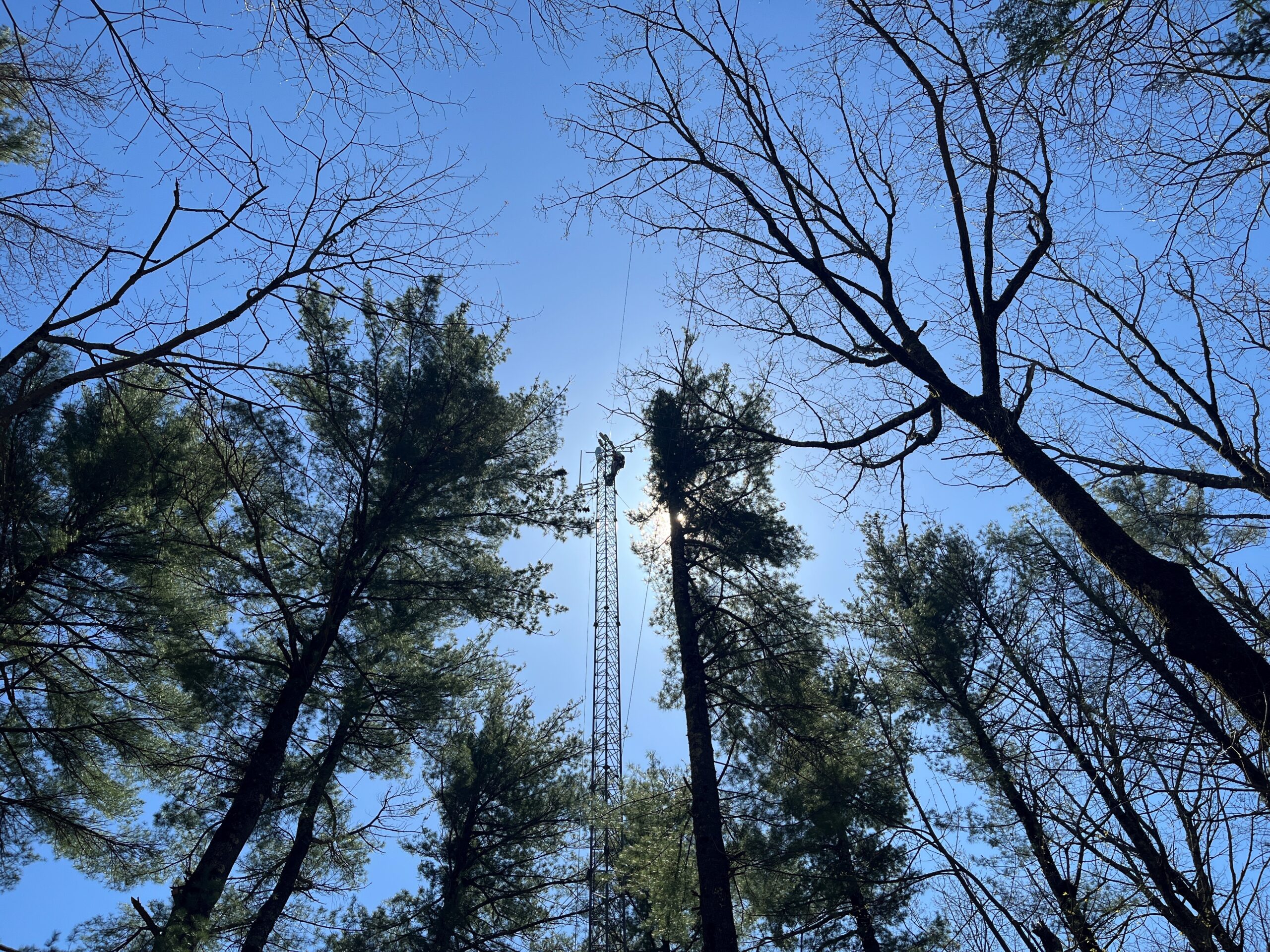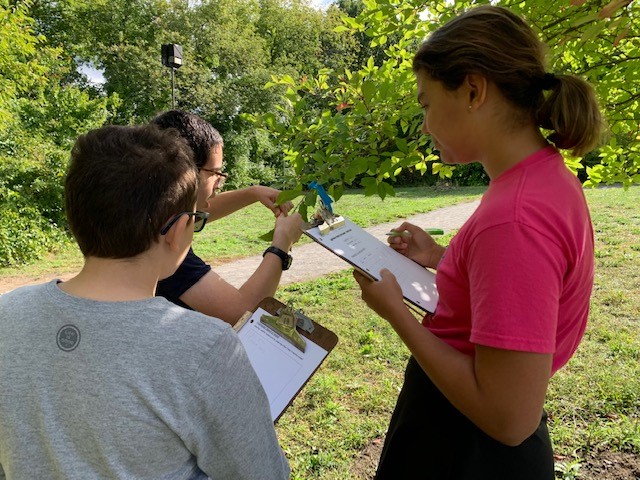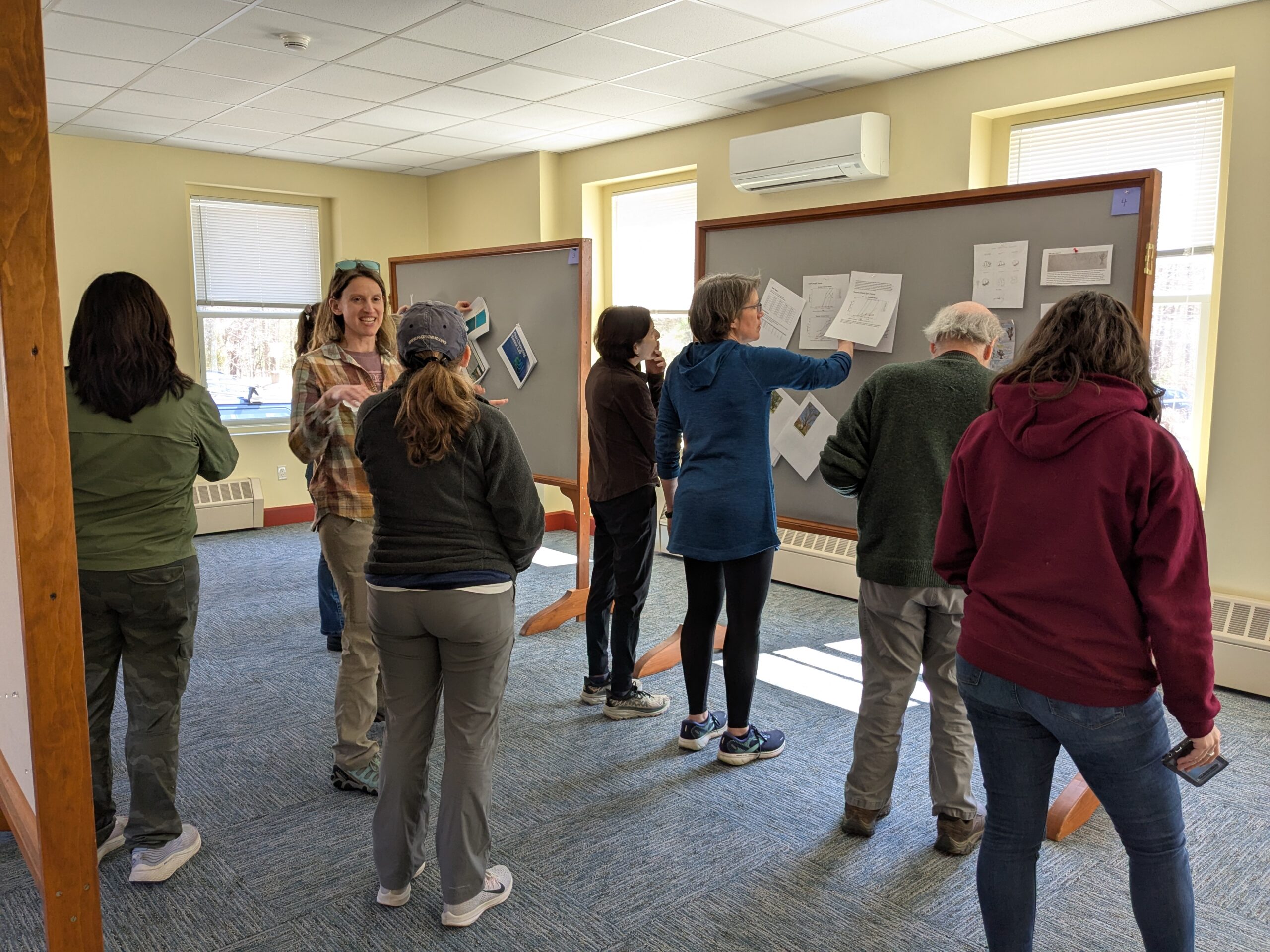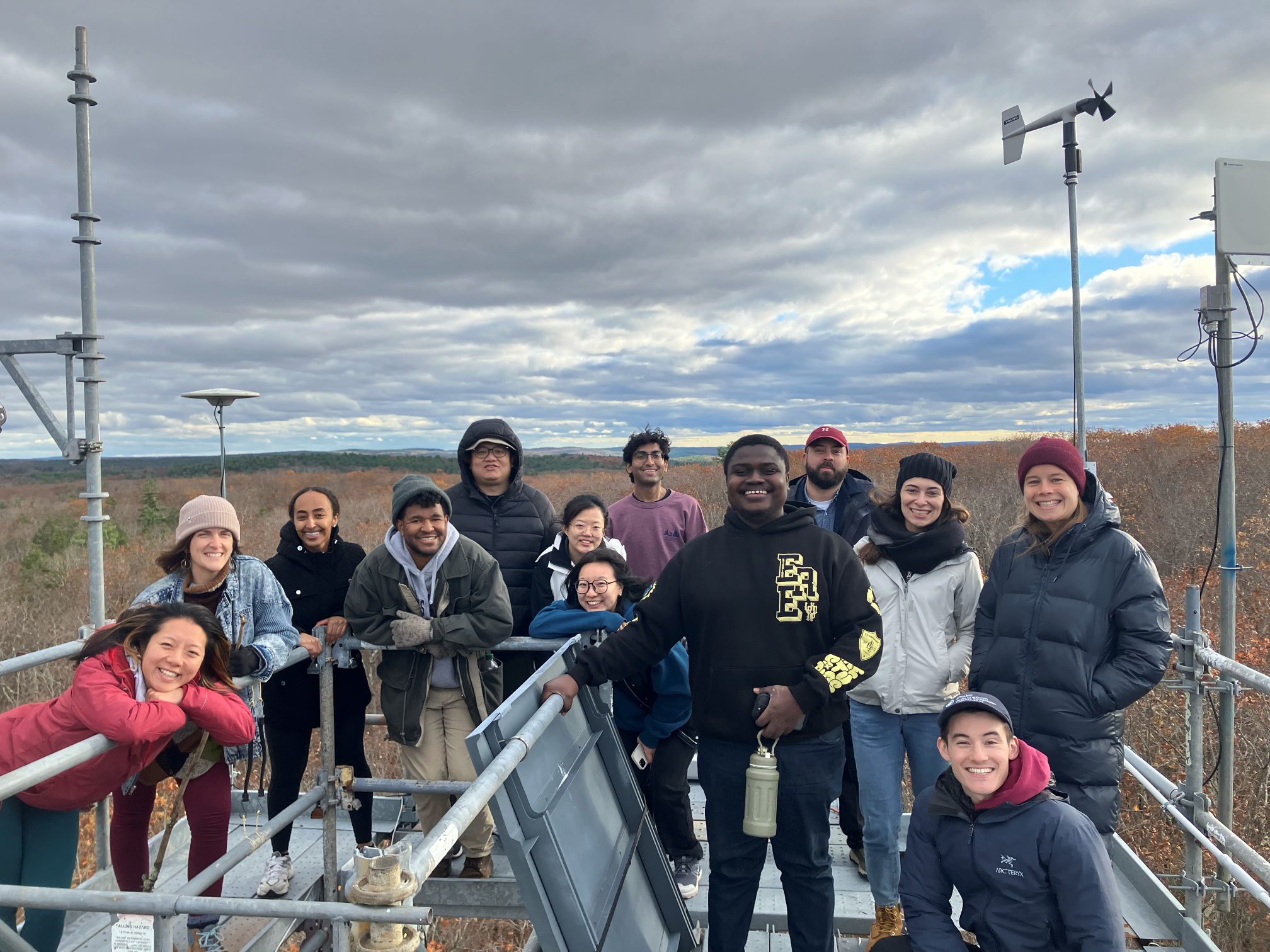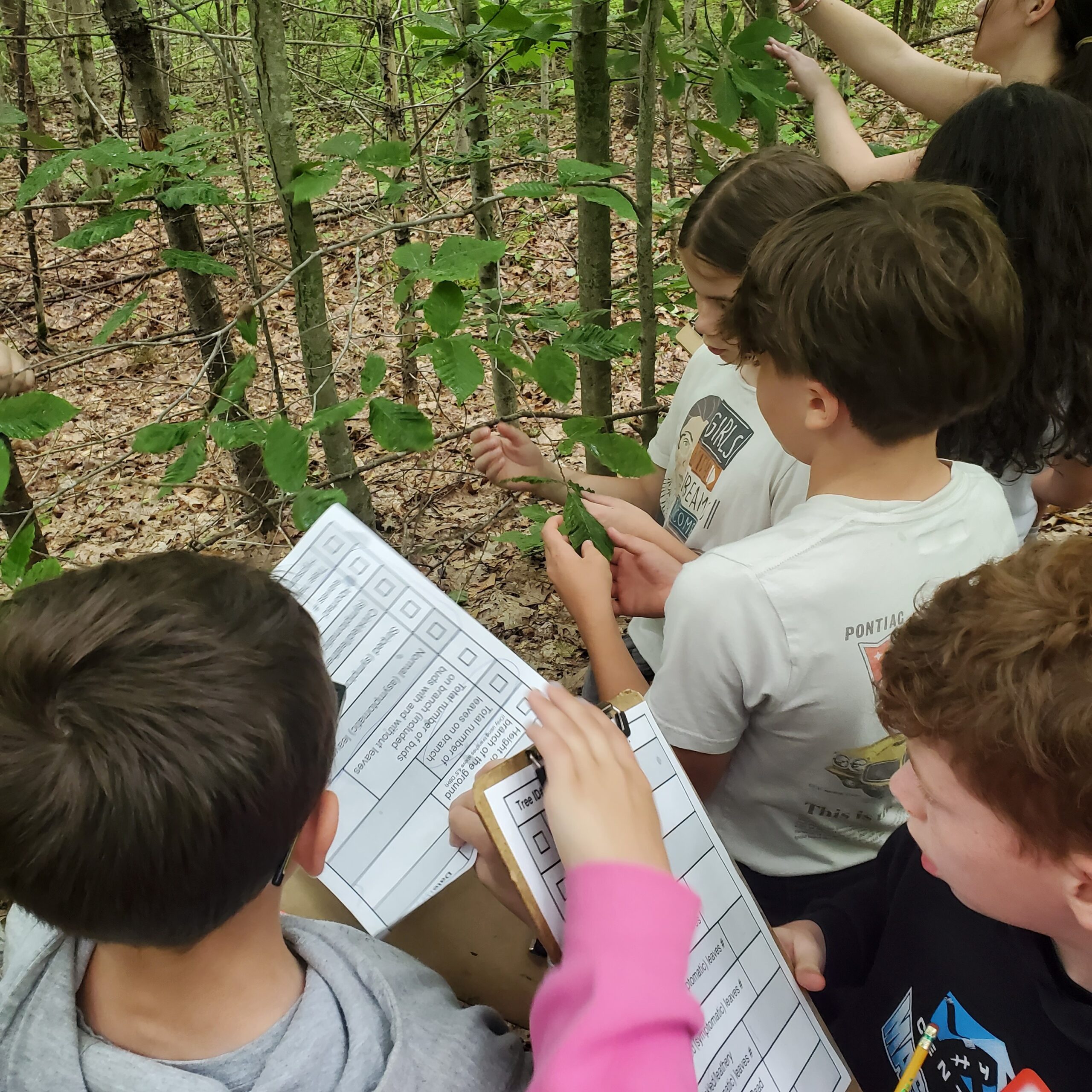
Tara Goodhue, Science Department Head at Lowell High School and Schoolyard Ecology educator collaborator has just been named the 2026 Massachusetts State Teacher of the Year. Tara has participated in Harvard Forest Schoolyard Ecology since 2017 and has become one of the program’s biggest advocates.
Tara has published a chapter in the book, Educators’ Work-Integrated Learning Experiences (2024), “Work-Integrated Learning in the Forest: The Journey of a Science Educator,” as well as a publicly available learning resource that was created as part of a National Science Foundation-funded RET (research experience for teachers) in the Thompson Lab at Harvard Forest in 2020-2021. The resource, “Love That Dirty Water,” engages students in thinking about the effect of development patterns on water quality in the Merrimack River valley of New Hampshire and Massachusetts.
Tara also has a doctorate in educational research, and since 2024 has been part of a Harvard Forest research, studying STEM identity development in Massachusetts middle school students. Our research question has been: To what extent does a year of participation in the Harvard Forest “Buds, Leaves, and Global Warming” project influence middle school student participants’ science identities and motivation, science values, and environmental attitudes? Middle school students in seven different schools have been participating in a pre- and post- survey that collects quantitative and qualitative data.
When speaking about why she loves participating in Schoolyard Ecology, she focuses on the tangible benefits of outdoor learning: “It’s really cool when you take kids outside. I work with mostly juniors and seniors, so 16 and 17 year-olds — this childlike wonder comes out in them.” All Schoolyard Ecology data is publicly available online. You can explore graphs of the long-term data record created over the past decade by Tara and her students in our online database (long-term forest plots, long-term tree phenology).

